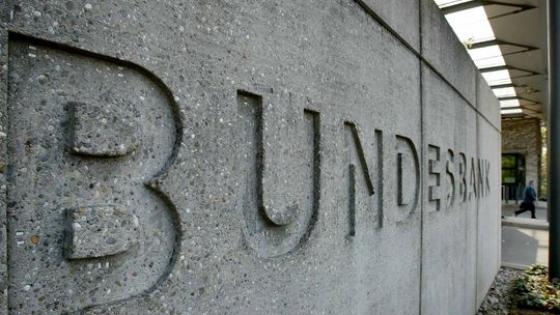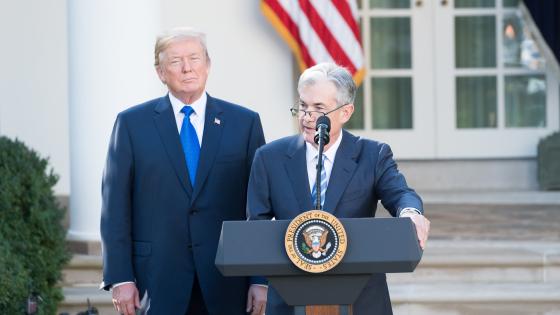Editor's note: This column first appeared as a chapter in the VoxEU eBook "Hawks and Doves: Deeds and Words - Economics and Politics of Monetary Policymaking", available to download here.
For a long time, the ‘independence’ of central banks was hardly a subject of discussion, either in academic papers or the media. Germany was an exception. The independence of the central bank, the Bank deutscher Länder (BdL), was imposed in 1948 by the Allies, more precisely by the Americans (the representatives of the UK and France were not in favour of the idea). Chancellor Konrad Adenauer strongly opposed the idea of giving the Bundesbank, the successor to the BdL, the same status of independence. However, in light of the high reputation the central bank had already earned during the short period of its existence, public opinion, and the strict position of the Minister for Economics Ludwig Erhard, the chancellor had no choice other than to give in. As a result, the Bundesbank Law of 1957 codified central bank independence.
The so-called Great Inflation of the 1970s sparked significant interest in the question of why major central banks – with the exception of the Bundesbank (Issing 2005, Beyer et al. 2008) – were not willing or able to keep inflation under control. A first paper by Bade and Parkin (1980) showed an inverse relationship between the degree of central bank independence and inflation. The fact that this article was never published illustrates the lack of broader interest in the question. Soon, however, a number of subsequent empirical studies confirmed the result, which provided substantial evidence in favour of central bank independence (for a survey, see Eijffinger and De Haan 1996). Around the same time, emerging new research offered deeper insights into the mechanisms of monetary policy. Kydland and Prescott (1977) discussed time inconsistency, Barro and Gordon (1983) addressed credibility and the significance of rules versus discretion, and, finally, Rogoff (1985) shed light on the importance of personalities.
Later, Cukierman (1992) connected these different strands of theoretical and empirical work.
As a consequence, a broad consensus emerged that the optimal statute for a central bank should be founded on the principle of independence and a clear mandate for price stability or low inflation.
This consensus had a strong global impact on the legislation of central banks. While the index for central bank independence had remained low and stable between 1972 and the late 1980s, it enjoyed a boost thereafter, reaching its zenith before the financial crisis of 2008 (Masciandaro and Romelli 2015).
New interest in central bank independence
The propagation of independence around the world was widely followed by a period of low and stable inflation, satisfactory growth and employment. Some researchers interpret this development as due to a decline in exogenous shocks (Stock and Watson 2003), whereas for others (Romer and Romer 2002) improved macro policies, especially monetary policy, were mainly responsible for this ‘Great Moderation’. While the jury on ‘post hoc ergo propter hoc’ is still out, this favourable outcome has greatly strengthened the case for central bank independence. And the reputation of these independent central banks peaked in the course of the financial crisis of 2008, when they were praised as the rescuers of a global economy threatened by a depression of a magnitude similar to that of the 1930s.
In the meantime, the independence of central banks has again become a prominent subject in academia, politics and the media. However, this time, in contrast to the past, critical voices dominate. How can this turnaround in public opinion be explained? One possibility is excessive, unrealistic expectations about what central banks can achieve. The Bank for International Settlement’s Annual Report (BIS 2016: 22) presents a concise assessment:
“And yet the extraordinary burden placed on central banking since the crisis is generating growing strains. During the Great Moderation, markets and the public at large came to see central banks as all-powerful. Post-crisis, they have come to expect the central bank to manage the economy, restore full employment, ensure strong growth, preserve price stability and foolproof the financial system. But in fact, this is a tall order on which the central bank alone cannot deliver. The extraordinary measures taken to stimulate the global economy have sometimes tested the boundaries of the institutions. As a consequence, risks to its reputation, perceived legitimacy and independence have been rising.”
Another reason for this change of mind on central bank independence can be found in the overburdening of central banks by an increasing number of responsibilities and competences. There are arguments for and against the concentration of banking supervision within the central bank. Actually, responsibility for financial stability has become a major challenge for central banks. In essence, this is true almost irrespective of whether or not the central bank has an official/legal mandate in this field. Should the central bank integrate financial stability concerns in its monetary policy geared towards containing inflation? How should this be managed? The concept of ‘leaning against the wind’ (Borio and Lowe 2002, White 2009) is under heavy criticism (e.g. Kohn 2007). After all the Tinbergen rule asks for a separate instrument. Yet, macroprudential policy as the solution to maintaining financial stability may not represent a panacea (Issing 2017b). At any rate, central banks face a variety of expectations that are prone to disappointment. The more they fail to be met, the more the status of independence will be called into question.
The biggest threat for independence lies in possible actions by the central bank itself. One comes from using instruments with distributional consequences, such as cheap credit to special groups, banks or companies. It is true that any monetary policy decisions will have distributional effects. However, in principle, these are unintended side effects of a monetary policy directed towards the goal of low inflation, whereas the measures just mentioned have deliberate discriminatory effects. Decisions of this kind must remain within the confines of politics, and thus voters. An independent central bank does not, and should not, have a mandate for such interventions.
A permanent threat for independence relates to the coordination with fiscal policies. In his impressive history of the Fed, Allan Meltzer analysed episodes in which the central bank gave in to political pressure or just followed directions given by the government (Meltzer 2014, 2014a, 2014b). Legal independence might still have prevailed, but in reality the central bank had sacrificed its independence. In more subtle cases, measures taken by the central bank are de facto acts of fiscal policy, which also raises doubts on its compliance with the status of independence.
In a democratic society, independence for the central bank can be justified only if actions are limited to fulfilling a specific mandate. On this basis, in the Maastricht Treaty, the ECB was endowed with independence by a unanimous decision, although President Mitterrand raised early objections (Issing 2017a). Criticism that the ECB had transgressed its mandate began immediately after its capital market intervention of May 2010, in the course of which it purchased government bonds of countries which otherwise would have experienced substantial increases in long-term interest rates. The exercise undoubtedly posed a dilemma for the central bank. On the one hand, by intervening in the market, it would be seen as conducting fiscal rather than monetary policy; on the other hand, the central bank felt the need to act because the fiscal policies of member states failed to meet their obligations. Despite the establishment of the European Stability Mechanism (ESM), the ECB’s interventions – designed to prevent the government bond spreads of fiscally troubled countries from increasing – were widely interpreted as a guarantee for each country’s membership and the existence of the euro itself. This notion was taken to extremes by the famous “whatever it takes” announcement of the ECB president. ECB monetary policy decisions that particularly benefitted distressed countries and banks further supported this view.
The decisions by the European Court of Justice and the German Constitutional Court have generally rejected the allegations that the ECB had exceeded its mandate and violated the Treaty. It is difficult to understand the economic logic behind the legal reasoning, but the mere fact that measures taken by the central bank were brought before the European Court of Justice and the German Constitutional Court undermines the reputation of the central bank. There is a high risk that future ECB actions may lead to new litigation.
Will independence survive?
Charles Goodhart has suggested that “[t]he idea of the central bank as an independent institution will be put aside” (Goodhart 2010: 15). He sees central banks as increasingly involved in interactions with governments on issues like regulation and sanctions, debt management and bank resolution. Add the arguments presented above, and the previous consensus on independence does not seem to hold anymore. These developments would suggest that independence cannot survive. To focus only on independence is, however, misleading. As explained before, the legal status is the basis on which a central bank can design a strategy and conduct a monetary policy which avoids the risk of time inconsistency and creates credibility. It is difficult to see how these conditions could be satisfied by a central bank that is more or less under the control of the government or politics in general.
In various ways, it is central banks themselves that have undermined the case for independence. How can legal (de jure) independence be justified when central banks de facto behave in a contradictory way (Cargill and O´Driscoll 2013)?
The conditions for abolishing the legal status of independence differ widely across countries. In this context, a comparison between the Fed and the Bundesbank is telling. The law on the Bundesbank could have been changed anytime by a simple majority in parliament. However, considering the outstanding reputation of the central bank, no politician ever had an incentive to take a corresponding initiative – quite the opposite applies. In contrast, the status quo of the Fed is permanently under threat. Those attacks have a long history. Between 1979 and 1990, for example, no fewer than 200 bills were submitted to the US Congress containing 307 proposals on 56 issues “that would alter the structure of the Federal Reserve System relating to its conduct of monetary policy” (Akhtar and Howe 1991).
In the case of the ECB, the status of independence is enshrined in a Treaty that can only be changed by unanimous decision of all member states, which requires ratifications by all parliaments and, in several instances, even referenda. Hence, for all intents and purposes, changing the legal status of the ECB seems like a hopeless endeavour.
The legal status of a central bank is one thing, support in public opinion is another. As a general observation, one might argue that irrespective of de jure independence, a central bank would run into deep difficulties maintaining de facto independence and defending monetary stability against a society of excessive demands (Issing 1993). However, it would be wrong to conclude that the legal status is irrelevant. Not giving independence to the central bank or, even worse, taking it away would open the door to higher future inflation – which in turn would restart a similar discussion as in the 1980s.
References
Akhtar, M A and H Howe (1991), “The Political and Institutional Independence of U.S. Monetary Policy”, Banca Nazionale del Lavoro Quarterly Review No. 178.
Bade, R. and Parkin, M. (1980), “Central Bank Laws and Monetary Policy”, unpublished manuscript, Department of Economics, University of Western Ontario, Canada.
Bank for International Settlements (2016), 86th Annual Report, Basel.
Barro, R J and D Gordon (1983), “Rules, Discretion and Reputation in a Model of Monetary Policy”, Journal of Monetary Economics 12(1).
Beyer, A, V Gaspar, C Gerberding and O Issing (2008), “Opting out of the Great Inflation: German Monetary Policy after the Break Down of Bretton Woods”, NBER Working Paper No. 14596, Cambridge, MA.
Borio, C E V and P W Lowe (2002), “Asset Prices, Financial and Monetary Stability: Exploring the Nexus”, BIS Working Paper No. 114, Basel.
Cargill, T F and G P O’Driscoll, Jr. (2013), “Federal Reserve Independence: Reality or Myth?”, Cato Journal 33(3).
Cukierman, A (1992), Central Bank Strategy, Credibility, and Independence: Theory and Evidence, Cambridge, MA: MIT Press.
Eijffinger, S C W and J De Haan (1996), “The political economy of central bank independence”, Special Papers in International Economics No. 19, Princeton, NJ.
Goodhart, C. A. E. (2010), “The Changing Role of Central Banks”, BIS Working Paper No. 326, Basel.
Issing, O (1993), “Central Bank Independence and Monetary Stability”, Institute of Economic Affairs Occasional Paper 89, London.
Issing, O (2005), “Why did the Great Inflation not happen in Germany?”, Federal Reserve Bank of St. Louis Review, March/April.
Issing, O (2017a), “Central Banks – are their reputation and independence under threat from overburdening?”, International Finance 20.
Issing, O (2017b), “Financial Stability and the ECB’s Monetary Policy Strategy”, paper presented at the ECB Legal Conference, 5 September.
Kohn, D L (2007), “Monetary Policy and Asset Prices”, in Monetary Policy, a Journey from Theory to Practice, Frankfurt: ECB.
Kydland, F E and E C Prescott (1977), “Rules rather than Discretion: The Inconsistency of Optimal Plans”, Journal of Political Economy 85(3).
Masciandaro, D and D Romelli (2015), “Ups and downs of central bank independence from the Great Inflation to the Great Recession: theory, institutions and empirics”, Financial History Review 22(3): 259-289.
Meltzer, A H (2004), A History of the Federal Reserve, Volume 1, 1913-1951, Chicago, IL: University of Chicago Press.
Meltzer, A H (2014a), A History of the Federal Reserve, Volume 2, Book 1, 1951-1969, Chicago, IL: University of Chicago Press.
Meltzer, A H (2014b), A History of the Federal Reserve, Volume 2, Book 2, 1970-1986, Chicago, IL: University of Chicago Press.
Rogoff, K (1985), “The Optimal Degree of Commitment to an Intermediate Monetary Target”, Quarterly Journal of Economics 100.
Romer, C D and D H Romer (2002), “The evolution of economic understanding and postwar stabilization policy”, NBER Working Paper No. 9274, Cambridge, MA.
Stock, J H and M W Watson (2003), “Understanding changes in international business dynamics”, NBER Working Paper No. 9859, Cambridge, MA.
White, W R (2009), “Should Monetary Policy ‘Lean or Clean?”, Center for Financial Studies, Frankfurt am Main.



